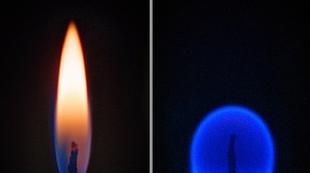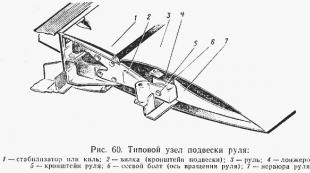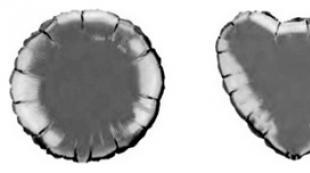To ensure that heating and plumbing work without interruption: how to choose a water filter for a gas boiler? Filter for heating boiler against scale Filter for heating system of gas boiler

Now in the world there are quite a lot of options for heating apartments and homes, but heating with gas boilers remains one of the most effective and economical ways to heat residential premises. Therefore, one of the main elements in the entire operation are filters for the heating boiler, generator, exhaust pipe and other equipment.
Gas, which is a fuel for heating the room, cannot cause harm to this unit and its components, but this does not reduce the possibilities of damage. After all, even the warranty period cannot prevent breakdowns. Let's look at some reasons for various breakdowns. The first of these may be incorrect installation of the boiler yourself, so be sure to seek help from a qualified specialist who will help you choose and correctly install the heating system.
You need to use the boiler for heating correctly, while not forgetting the importance of timely maintenance.
It is best to purchase a voltage stabilizer, otherwise frequent power surges and power outages will cause damage, which will cost a pretty penny for the owner of the boiler unit.

Voltage stabilizer for boiler
And here is the most interesting reason for boiler failure, which is touched upon in this topic - poor quality work. It is to solve this problem that you need to purchase a filter for the heating system.
Water is a liquid that heats up in the boiler and causes mechanical contamination. Tap water is not distinguished by its purity and softness, and also contains a lot of salts, which pose a great threat to good health. This is where the need for a boiler filter appears, which is installed on the inlet pipeline and softens the water entering the unit.

Filter in the heating system
Water Filtration Options
There are several types of water filtration for heating a private home:
- Electromagnetic
- Magnetic
- Ionic
- Ultrasonic
There is another way to filter water for heating; it is very effective in combating hard water, but is used extremely rarely, as it is considered a very expensive pleasure. This is a membrane method of filtering water in the heating system of a private home.
Magnetic filters for heating can be used where the water movement speed is low. Then they will perfectly perform their main function. But still, electromagnetic filters are considered the best option; they can perform their function even at high water temperatures and high speeds. Such a filter for purifying water in heating will last for more than thirty years, and repairs will not be a problem.
Of course, no one would like to encounter a breakdown, but it is simply impossible to insure yourself here. And if a malfunction occurred during the heating season, then you need to act immediately, because being left without heating your home in cold weather is simply terrible. If you yourself cannot figure out and eliminate the cause of the failure of the heating system, then seek help from specialists. They will help in the shortest possible time to eliminate and improve the performance of the heating machine and its components.
The brains of the boiler are called the electronic board. It is she who is responsible for all the main processes in the operation of the unit and a failure in its operation brings with it bad consequences. A network stabilizer often prevents such violations. If the circulation pump breaks down, boiling water is inevitable.

Boiler electronic board
The safety thermostat will turn off the boiler, but the problem will remain. This is where a heating filter, which is installed on the inlet pipe, will help. After all, it is the formation of scale and a large amount of debris that causes pump failure. They pay special attention to the coolant, because it is the factory defects in the operation of the heat exchanger that will manifest themselves very early.
Gas automatics cannot be repaired; in the event of such a breakdown, the non-working device must be completely replaced.
No one will argue that the heating system and the gas boiler itself are a very complex chain in which the action of all components is interconnected. That is why boiler automation is used, which controls the operation of the boiler and promptly sends signals about possible violations of the processes of this unit.

Boiler service
Heating should be entrusted only to qualified specialists in order to maximally protect yourself from subsequent breakdowns, which can even result from incorrect replacement of some units of the unit.
You can do maintenance on the heating system yourself. It involves replacing old taps, fittings, painting pipes and heating radiators. If you already have experience and are confident in your abilities, then you can start flushing the system yourself.
Never put off replacing old and rotten ones until later. Such parts require urgent replacement, because it is precisely such minor breakdowns that will ultimately lead to a major accident in the operation of the entire heating system, in general. A technician will help you troubleshoot these minor problems.
Let's sum it up
Gas boilers and the heating system as a whole are a complex mechanism where all of its components play an important role in heating residential premises. Even the most inconspicuous breakdown can bring down the entire system. Therefore, filters for heating boilers and repairs are an important component that every consumer should know about.
When repairing units, do not forget that the heating system is complex and requires professional intervention. So, if you do not have experience in this area, then seek help from specialists who will help identify the problem, eliminate it and guarantee the continued productive operation of all important components of the boiler.
When it comes time to think about the heating system in your home, a lot of technical questions arise. Of course, you want to do everything correctly, thoroughly and inexpensively. But it’s not enough just to properly plan the system itself; you also need to take care of the water flowing in the veins of your home. Excessive water hardness and abrasive impurities in it can shorten the life of your system by decades. Today there are many ways to purify water. And you definitely shouldn’t skimp on them. Savings here will entail large expenses in the future, including replacement of machinery and equipment. When using water from a well or reservoir, several filters must be used to protect the coolant. There are four main and mandatory ones:
- ion exchange resin filter
- cascade mechanical cleaning filter
- universal filter mesh
The uninitiated user, of course, will have natural questions. What are heating filters for, are they useful, do you need to use them all at once and at what stage? The questions are natural and require a detailed answer. It is worth planning the installation of filters at the design stage of your home. It is necessary to allocate space for them, taking into account installation and maintenance. Provide a connection system. If the moment was missed, the filters can be installed later, but this will entail additional labor costs. Therefore, if you are still at the planning stage, it’s time to study each filter in detail.

A flush filter for heating systems is necessary for the mechanical purification of water supplied to a heating system with a working environment temperature of up to one hundred and ten degrees. The filter purifies water from suspended matter, mud and silt deposits, sand, etc. The cascade filter is more compact than other filters with similar functionality. The volume reduction was achieved thanks to the latest nested filter system. Two filter elements of different sizes are placed one inside the other, and the vertically directed water is twisted into a spiral and is effectively cleaned of mechanical impurities. The device is installed strictly vertically. Cleaning the filter elements is quite simple; there is no need to remove the mesh inserts. The body and bulb are most often nickel-plated. Filter elements made of stainless steel. The filter does not take up much space. Simple and reliable in operation.
Universal filter mesh
The simplest mesh filter for heating. It consists of a body (metal) and a cylindrical mesh located inside the flask. The housing is closed with a plug or tap, depending on the type of filter. Connection system - flange. There are washable and non-washable filters. Non-flush ones must be replaced at the end of their service life. The washers last a long time thanks to cleaning. It is necessary to stop the water circulation, dismantle the cover, remove and wash the mesh, and install it. In addition to its relatively low price, the mesh is attractive due to its simple design, easy maintenance and cheap components. This filter is installed in front of the fine cleaning system. This is the penultimate level of protection. Serves to purify water from scale or solid inclusions. Pipe fittings or pumps damaged by scale will cost tens of times more than a cheap filter. The filter does not take up much space.
Coarse filter

The filter is installed when connecting the heating system to the central water supply. It is a flask with a filter element inside. The connection can be flanged or coupling, depending on the diameter of the water supply pipes. Necessary for filtering large contaminants. Effectively retains dirt, sand, large abrasive impurities. It will reliably protect the heating system from large elements, but will let small ones through. It is also not capable of chemical cleaning or water softening. He cannot purify the water to the desired state on his own. Doesn't take up much space. The coarse filter is the first line of defense for your home's water supply.
Ion exchange resin filter

The main component of this filter for heating systems is granular resin saturated with sodium ions. Installed directly behind the coarse filter. Necessary for reducing water hardness. It is known for certain that hard water is a big problem and an immediate threat to all household appliances. The heating system is no exception.
- Softening water will significantly extend its service life,
- It will reduce scale formation or stop this process altogether.
- In addition to scale, the filter is able to combat chlorine impurities, oxidation, iron, and salts.
Such a system takes up quite a lot of space and requires frequent maintenance. When installing, make sure there is enough space not only for installation, but also for routine maintenance. Undoubtedly, such a system is necessary in every home.
In this video we talk in detail about the use of an ion exchange resin filter (watch from 14:15):
To replace the filter loading, you can call a specialist, or do it yourself. When the cleaning system stops working properly, it is necessary to dismantle the system and wash the filler using high water pressure, then load gravel or table salt. Add filler. First turn off the water supply to the heating system and drain the remaining water.
You can choose the right ion exchange resin filter only after analyzing the water. Only by passing the sample to specialists and knowing the composition can you choose a filter that suits its characteristics. Contact the professionals.
Each of the filters takes its place in the chain, complementing each other and jointly creating a single cleaning front. Provide protection for expensive equipment, increase service life and save you money on maintenance. It is recommended to use such a filtration system not only in the heating system. Water treated in this way can be drunk; it significantly extends the life of a washing machine, dishwasher, faucets and other water-related equipment. Equip your home correctly to get the maximum benefit and benefits from modern technologies.
The dirt trap in a home heating system is as small as it is important. An inexperienced viewer, contemplating the intricacies of pipes in a home boiler room, may think that such a small piptik - a coarse filter for the heating system - is just an unnecessary worry, you can do without it, because clean water was poured in... from the tap... Not suspecting that the mud trap is actually In fact, this is the boss of the heating system in his house. Next, let's look at where the dirt comes from, how to deal with it, how to install a filter in the system and how to clean it - why is the system clogged?
Where does dirt come from in heating, why is there no fluid movement?
Where does scale come from in a kettle, since clean water was poured in? But there are 50 kettles of water in the heating system - you can imagine how much sediment accumulates from it. And if the water changes, due to a leak, during the repair process, an additive will come accordingly. Also, a huge number of pieces of metal, enamel, thread, and something else “without a name” will be torn off from the entire internal surface of the system. But this is all child's play, compared to what happens if a corroded part is discovered, the whole mass gradually turning into sediment. And steel pipes can become sources of just mountains of rust.
What filters are used in home heating systems
In most cases, brass strainers are installed in the home heating system. They are simple, but they get the job done. All particles carried by the flow with a size of more than 0.5 mm are retained by a metal mesh and settle in the settling tank. The filter is extremely cheap, easy to install and maintain.
The most common thread diameter - 3/4 or 1 inch - is selected in accordance with the diameter of the main pipeline at the installation site.

Below are the characteristics in the photo of mesh brass dirt filters depending on the diameter.

Design options for rough cleaning of the heating system
Mud collectors of other designs are less common. The increased price of some does not provide benefits in most cases.
- Made from polypropylene - welded, and that's it...

- With additional magnetic catcher in the sump.

- With flush tap.

- On flanges, with pipe diameters greater than 2 inches.

- The body is made of cast iron, it can also be transparent...

How to maintain a dirt filter
If the system stops working normally, you need to inspect the dirt filter - tighten the sump cover nut. This is done carefully with the appropriate key. The seal under the nut is a copper washer, so a significant moment of force is needed to break the nut out of place, after which the rotation is already easy. A tray is placed to collect a small amount of coolant, which is inevitably lost when the sump lid is opened. Then the metal mesh is removed and cleaned.

But first you need to close the shut-off valves, which should be installed near the sludge filter on both sides. Otherwise, all the coolant from the system can be released through it, and the first portion will also flow under pressure...
The main rule for installing a mud pan
If you do not install the coarse filter correctly in the heating system, it will not work as expected, and blockages will occur without the ability to properly clean it.
The rule is simple - the sump must be facing downwards. It is under the influence of gravity that all trapped particles settle in the settling tank.

It is allowed, if the filter is positioned horizontally, to be turned with a sump closer to the horizontal position for ease of maintenance, for example, if equipment is in the way from below. But in any case, the sump should be turned slightly downward.
How to install a cleaning filter in a heating system, diagram
The filter is installed on the return line in front of the main equipment that it protects, as a rule, in front of the pump in a given branch or in the entire system.
With an automated boiler, the filter is installed on the return line before entering the boiler - between the shut-off valve and the boiler shut-off valve.
If the pump is remote, then a typical example of installing a filter in front of the pump is shown in the diagram; taps are also required to be able to service the filter, the service life of which is 1 year.

The expert advised: don’t get confused. Carelessness in installing the filter will cost the system a stop and possible equipment failure. An arrow on the body of the mud pan indicates the direction of fluid flow. Only install the filter correctly in relation to the direction of flow.
Cleaning filters will help extend the life of equipment and the entire system as a whole.
Every property owner is interested in high-quality and uninterrupted operation of life support systems. The latter include electrical networks, sewerage, water supply and, of course, the heating system. In the absence of any of the systems, housing cannot be considered fully comfortable or, at best, will be unfinished. In order for all improvement systems to function properly and serve as long as possible, metering and control devices are used, as well as various devices to improve operational efficiency. In heating systems with liquid coolant, one of the most important elements is the filter. What this element is and how to install it correctly will be discussed below. And now a little more about what it is intended for.
Why are filters needed for heating?

By periodically checking the condition of the cleaning filter, you can see how much dirt is circulating in the system
Dirt gradually accumulates in any heating system, even the most closed one. It is clear that this is not dirt from a country road, but microparticles of rust or salt deposits. But even they are enough to disable such parts of the heating circuit as a pump or a heating boiler. Moreover, the more complex and modern these devices are, the more they depend on the degree of purification of the coolant. This is explained simply: all modern equipment is stuffed with electronics, the worst enemy of which is dust and dirt. Particles invisible to the eye, carried by coolant under pressure, can cause significant damage to precision equipment. The salvation of a heating system is a simple water filter. With low cost and easy maintenance, it is good protection and can extend the service life of the entire equipment for a long time. It doesn’t matter which boiler is installed in your system. Whether it is a gas or electric boiler, a filter will not be superfluous in any case. And even more so in a system with forced circulation, that is, where the pump operates. In many models of gas boilers, filters are included in the equipment. In others, they are purchased optionally. When purchasing a modern gas boiler, you will only need to check its condition from time to time and perhaps occasionally replace the filters. If filter attachments are not supplied with the boiler or pump, you need to take care of purchasing and installing them in the system. By taking care in advance, you can protect yourself from the future considerable costs of repairing expensive equipment that may fail without proper cleaning of the circulating coolant.
What is a filter for water purification in a heating system?
Water filters are designed to be installed in a pipeline to purify the liquid flowing through them. According to their design, filter elements are mechanical, carbon and electronic. There is also a line of so-called reagent-free filters designed to soften water for a gas boiler. This is especially true for regions where water of high hardness is used in the water supply.
Using hard water without purification and softening leads to faster wear of equipment and the need for repair or replacement.
Carbon filters retain only the largest particles, but they perfectly adsorb odorous impurities. Installing a carbon filter helps keep the water in the system fresh and neutralizes odors. This is especially true when using water containing various chemical impurities, such as hydrogen sulfide.
Mechanical filters trap microparticles of dirt larger than 0.3 microns. The mesh of the mechanical filter for the heating boiler can be easily removed, washed under running water, and installed back. The frequency of this procedure is determined empirically and depends on the cleanliness of the product used and the tightness of the system. But in any case, after the end of the heating season, you should rinse all components of the heating system of a private home, including the filter.
Electronic filters are more expensive than mechanical ones, but they also do a much better job of cleaning. Particles larger than 0.01 microns cannot pass through their cordon.

When installing, you must adhere to certain requirements
Installing, washing and replacing cleaning devices is easy to do yourself. But no matter what type of water filter element for a gas boiler you choose, there are a number of general points that should be taken into account during installation:
- Before installation, it is necessary to flush the entire heating circuit (unless, of course, the installation is being carried out in a new, newly installed system). This is done so that the filter does not have to be removed or changed too soon;
- if a filter element for water purification for gas boilers is purchased separately, you need to pay attention to its compatibility with a specific type of equipment, as well as its diameter;
- install a filter in front of the pump or gas boiler. If the use of a pump in the system is not provided, then installation is carried out on the return line before the pipe enters the heating boiler;
- It is advisable to install shut-off valves before and after the filter element. This way, if necessary, you can wash or replace the filter without draining all the coolant;
- The installation site must be accessible for further maintenance, because from time to time the filter will need to be washed or replaced.
You can see how to properly install a filter for heating a private home in the video. We note that for more efficient operation of the boiler, pump and the entire system as a whole, in some cases it is advisable to use combinations of different filters and, of course, do not forget to periodically clean them.
1.
2.
3.
4.
5.
Of particular importance in installing heat supply in a house is an element such as a filter for the heating system. The scope of application of this equipment is those heating systems where the main heat carrier is hot water. Thanks to such a device, the entire heating circuit will function reliably and safely, since numerous harmful substances such as debris particles and various impurities in the coolant can cause significant harm to the entire system.
Thus, a dirt filter for heating retains all these substances, preventing them from entering the most important elements of the heating circuit - the heating boiler and circulation pump. Damage to them can cause the entire system to fail, and repairs are usually quite expensive. Therefore, it is very important that the mud pan for the heating system was installed correctly, and for this, first of all, you should study all its technical and operational characteristics, which will be discussed further.
Design and types of dirt filter
As mentioned above, filters for the heating system are designed to protect it from the ingress of hazardous substances by cleaning the coolant circulating in the circuit.Dirt filters for heating may differ in the type of their device, therefore, based on the design of these mechanisms, it is customary to distinguish the following samples:
- carbon filters;
- mud collectors operating on a mechanical basis;
- electronic systems.

When talking about the types of contamination of the heating system, one should distinguish between certain elements that pose a danger to its operation.
Among them it is worth noting the following:
- fine sand elements;
- rust residues;
- lime particles;
- gaseous impurities;
- ordinary dust mixed with various substances, etc.
Rules for installing a filter for a heating system
The design of the heating system sump must take into account certain features that are extremely important to take into account during the work process. It is quite possible to install this equipment with your own hands, having additionally studied photos of such products and studied videos on their installation, so you will not need any special construction skills to perform installation work.It is very important to remember one point: installing the filter should only be done in front of the circulation pump, and not behind it, otherwise installing a sump tank will not bring any benefit and the system will continue to get dirty.
Filters may also vary in circumference size. Thus, the most common cross-section parameters are from 15 to 100 mm. Which option to use in a particular case depends, first of all, on the diameter of the heating pipe.

The sump filter for heating should be mounted exclusively vertically, and the mountings are specially designed for this purpose. Do not forget also about installing shut-off valves, with the help of which you can save yourself from the need to periodically remove water from the system in case of contamination.
Installation of a sump for a heating system
In order to install a magnetic filter for heating or a filter of any other type, you should familiarize yourself with the following recommendations that can simplify the entire work process:- Even before installation begins, it is necessary to carefully prepare the system pipes, cleaning them from rust and other harmful particles.
- When deciding which type of sump design to use for a particular heating circuit, you need to be guided solely by its operational characteristics, in particular, the conditions under which the equipment will be used - operating pressure, temperature readings, etc.
- It is better to choose a location for installing the sump tank where access to the device will be as convenient as possible, taking into account that the filter should be mounted in the area in front of the circulation pump.
- One of the prerequisites for installation is that the cross-section of the filter opening must be identical to the cross-section of the pipe. This measure will ensure the strength of the connection and will prevent the mechanism from subsequently moving aside.

Dirt filter cleaning standards
The procedure for removing dirt accumulated inside the filter is not difficult at all:- the coolant circulating in the opposite direction will allow you to wash out sediments from the heating system;
- The mesh included in the filter design can be easily removed, cleaned and then put back in place.
Benefits of using a heating filter
Among the advantages that the installation of cleaning elements for heating brings with it, it is worth highlighting the following:- the filter provides high-quality protection against any kind of contamination;
- draining the water in the system and filling the circuit with new coolant does not need to be done frequently;
- installation of a mud trap definitely allows you to save financial costs;
- a system equipped with such a filter will work long and reliably.









